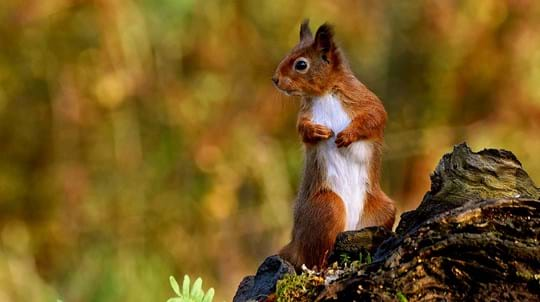
Blog
7 amazing woodland wildlife walks in Scotland
Charlie Mellor • 15 Jul 2022

Content manager
When you think of woodland wildlife, it's unlikely water-loving otters will spring to mind. But the clean rivers and shrubby banks of some of our sites make ideal habitat for these fascinating semi-aquatic creatures. See if you can spy one with our top tips for otter-spotting and list of waterside woods to try your luck.
Well-built for cold waters, otters' powerful tail, webbed feet, sensitive whiskers and claws make them fantastic swimmers and hunters. Fish is their favourite dish, though they'll happily eat birds, insects and small mammals too. Known for their playful character, they rest under cover between meals and raise pups year-round in a waterside holt. They are solitary animals with large territories, weighing in at 7-11kg and measuring 94-155cm in length.
If you think you've spotted an otter or its hideout, don't disturb it or get too close - enjoy watching from a distance.
Otters were close to extinction across much of the UK in the mid 20th century due to chemical pollution of watercourses. But their numbers are increasing, with populations strongest in Wales, Scotland and Ireland, and a return to every county in England.
These shy, secretive mammals are most active at night and notoriously elusive. But if you time your visit well - dawn and dusk are best - and know what to look for, you could get lucky.
Look for otter tracks in mud, sand and snow along the waterside. Each print can be 40-80mm across. Asymmetric prints might show only four of their five toes. You may be able to see the webbing, but usually no claw marks.
Not to be confused with: dog and badger prints include claws. Mink prints are similar but much smaller than otter.
Turn your eyes to the water for signs of bubbles as otters seek their prey beneath the surface, or the V-shaped wake they leave when swimming. You'll only just see their head and back above the water line, but if you're lucky you might glimpse their powerful tail as they plunge below in search of food.
Otter droppings are called spraints. Often left on rocks or logs close to the water, they can be green, grey or black and full of bones, shells, feathers and fur. The smell - sweet like jasmine tea or laurel flowers - is unique to each otter, helping them to communicate with each other, find mates and defend territories.
Otters are from the Mustelidae family, so are related to weasels, ferrets, polecats and pine martens.
Wherever there's clean freshwater, suitable hiding places and a good food supply, otters may be nearby. You can hunt for clues near any river, stream or loch, but here's a roundup of the woods we know they've visited or lived in before.
Otter numbers didn't suffer the same declines in Northern Ireland as elsewhere in the UK and the population here is healthy.
Explore Brackfield Wood, Killaloo Wood and Oaks Wood in the Faughan Valley, Londonderry. These woods hug the banks of the Faughan River to create prime otter habitat and sightings have been reported in these woods by volunteers and local anglers.
We've also recorded a family of otters at Drumnaph Wood, Maghera and often spot spraint near the Grillagh River. And volunteers, staff and anglers have spied otters and their telltale signs at Cabin Wood, Cookstown. This ancient wood is bordered by the Ballinderry and Killymoon rivers.
Otters have made a spectacular comeback in much of Wales. The wooded gorges of the Meirionnydd Oakwoods in particular are good habitat, with boulders and dense tree and shrub cover allowing them to slip between the coast and upland lakes.
Scout the riverside of Coed Felenrhyd & Llennyrch, Maentwrog where otters hunt along the Afon Prysor. Look for otters foraging along the Nant Gwernol river at Coed Nant Gwernol and Coed Hendrewallog, Abergynolwyn. Or visit Coed Geufron, Penparcau where their dens have been spotted along the Afon Rheidol.
The banks of the Afon Arron give good cover at Coed Aberneint, Dolgellau, where they also like to rest up in the old manganese mine. Their signs are common at nearby Cwm Mynach too, where they no doubt like to dine on brown trout from the lake!
Otter populations in Scotland have recovered well since the 1950s and they can now be seen across the country.
Pick a good hideout at Crinan Wood, Argyll and Bute, and wait patiently for sightings of Scotland's 'Big 5' around the eponymous loch: otter, red squirrel, red deer, harbour seal and golden eagle.
Look out for otter clues alongside Bennet’s Burn and by the banks of the lake at Pressmennan Wood, East Lothian, or along the shore of Loch Venachar at Glen Finglas, Stirling.
Otters have also been spotted in lochs close to Lang Craigs, Dumbarton and sometimes use the Overtoun and Garshake burns.
If you don't manage to fulfil your quest at any of those woods, otters have also been known to frequent Ledmore & Migdale in the Highlands, Oban's Dunollie Wood and Beeslack Wood near Edinburgh.
Just a few decades ago, otters were extinct across most of England. But the banning of harmful chemicals and a series of reintroduction projects have brought their numbers back to healthier levels.
Listen for the splash of an otter along the River Teign that gurgles and sparkles through Devon's Fingle Woods - we know of at least two holts in its banks. Otters are also known to live along the River Bovey in nearby Bovey Valley Woods. Also in the South West, otters are known to hunt the watercourses in the area of Millook Valley Woods, near Bude.
Up north, otters have been recorded in the River Wear that runs alongside Low Burnhall near Durham. Large tree root systems along the banks of Hart Burn are perfect otter habitat at Hartburn Glebe in Northumberland.
And at Fordham Hall Estate, near Colchester, an artificial holt on the meandering River Colne is used regularly.

Blog
Charlie Mellor • 15 Jul 2022
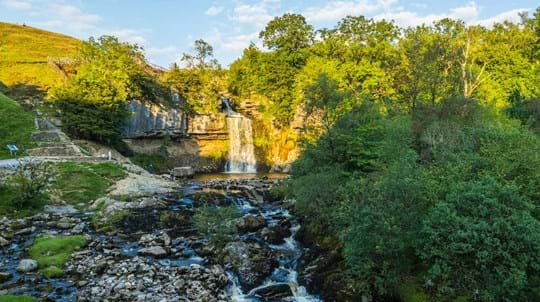
Blog
Charlie Mellor • 15 Jan 2021
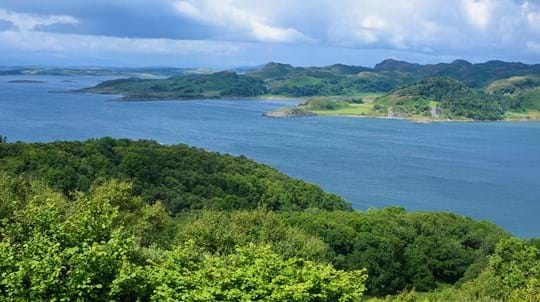
Blog
Charlie Mellor • 18 Jun 2019
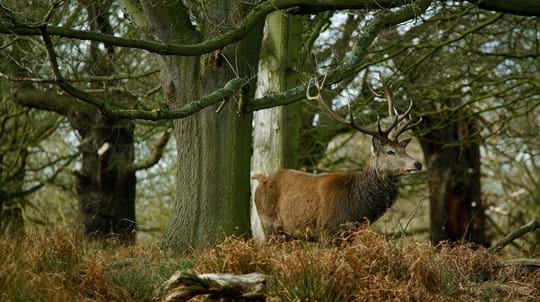
Blog
James Martin • 28 Jan 2019
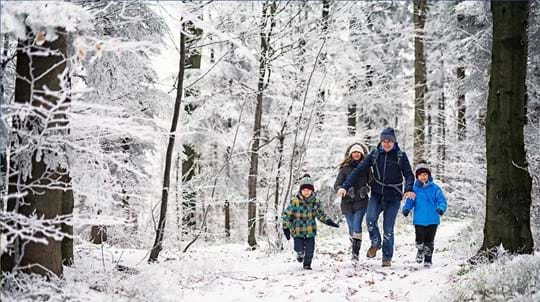
Blog
Danielle Wesley • 14 Dec 2020

Primordial landscapes, tangled branches, breathtaking wildlife and miles of woodland trails. From the countryside to cities, we care for thousands of woods throughout the UK, all free to visit.
Find a wood near you